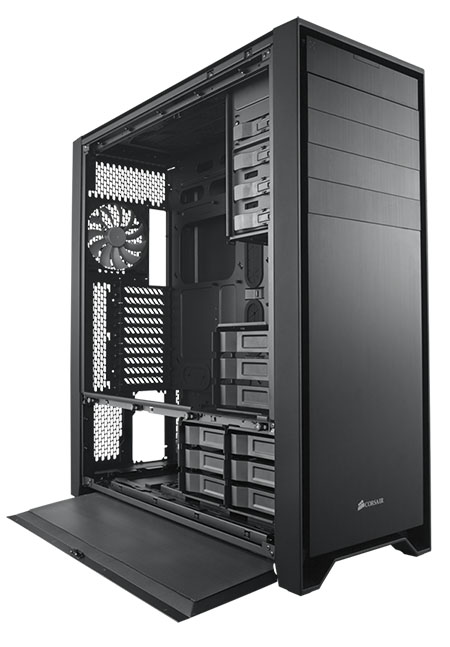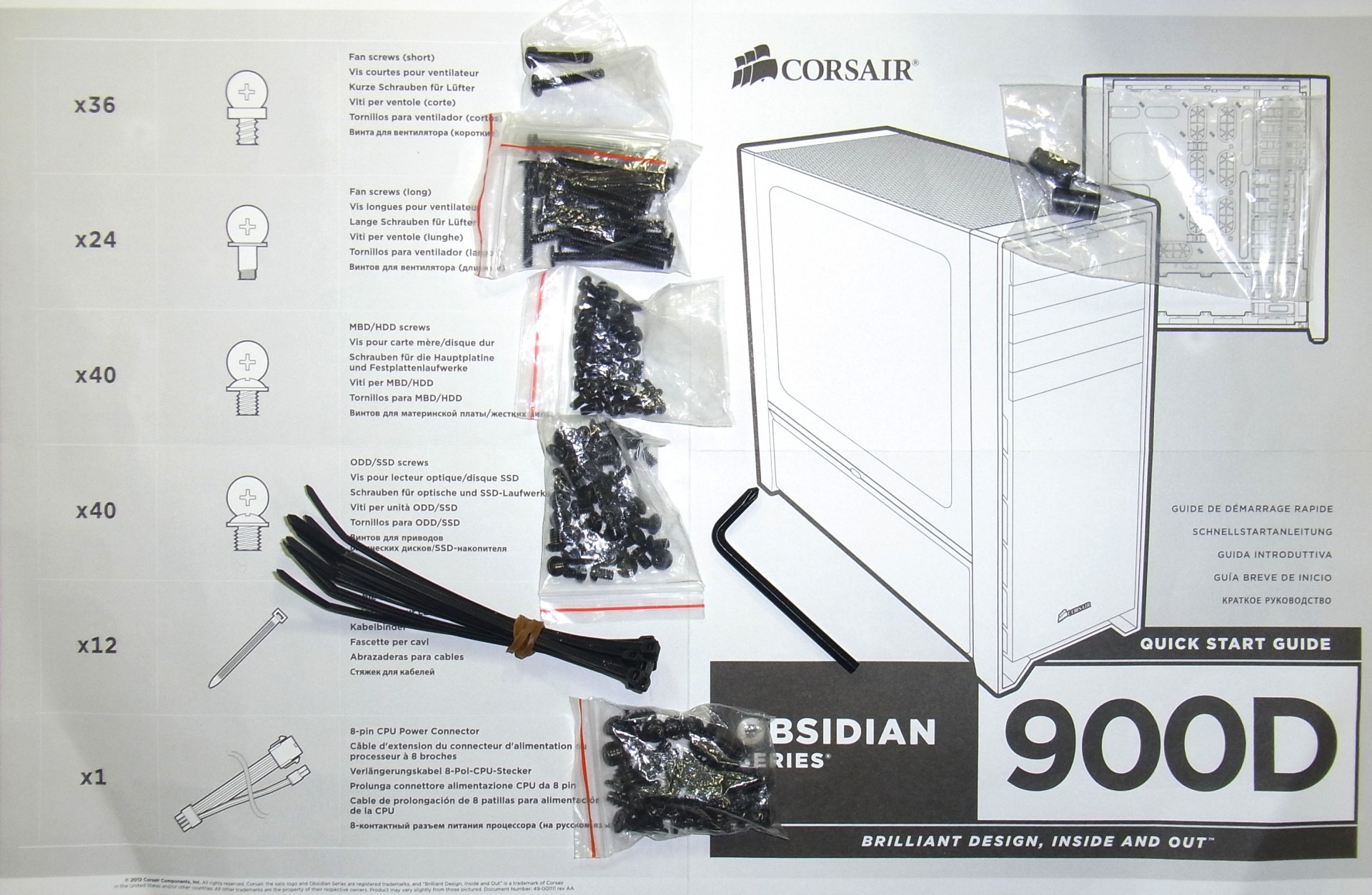Corsair Obsidian 900D Review: Making Room For High-End Gear
Corsair already offers a heavy tower case called the Obsidian 800D. Now, the company is one-upping itself with the Obsidian 900D. Is this a genuine high-end enclosure, a bomb shelter, or a mess of sheet metal? We put the case through our bevy of tests.
Going Hands-On With Corsair's Massive Obsidian 900D
When I tested Corsair's Obsidian 800D, I used two high-end graphics cards to fry eggs, prepare a fondue, and cook hot dogs. This time around I'll be a bit more serious. Don't expect to be bored, though. I'm still testing the company's latest effort in two completely different use cases. The first challenges the 900D in its stock configuration with two of the warmest Opteron processors I could find and two hot-running FirePro W9000 graphics cards. It's amazing how much heat you can kick out using OpenCL-enabled benchmarks on high-end hardware like this.
But our efforts don't end there. After benchmarking the first configuration, I swapped out all of the case fans, installed a fan controller and water cooling system, and replaced the Opteron-powered workstation with a highly-overclocked gaming setup. The pièce de résistance is a high-end audio amplifier I also deployed. Why? You only live once. That's why.
I enjoyed another benefit, too. Because the Obsidian 900D is more massive than a modern race car's chassis, man-handling this enclosure as I installed and removed high-end hardware scored me some serious cardio. I'm pretty sure I gained half an inch around each of my biceps, too. Who needs a gym when Corsair's Obsidian 900D is beckoning?
Shipping Box and Unpacking
Truly, this case presents a physical challenge for everyone, including the delivery guy who I'm pretty sure hates me at this point. Fortunately, the cardboard box looks more massive than the enclosure inside really is. Understandably, Corsair is concerned that external stresses could lead to minor deformations of the oversize chassis.
In the event that rough shipping does affect the Obsidian's integrity, you might find it difficult to close the lower doors. I put the 900D through my familiar tilt test, though this time with the goal of straightening out the case, and I succeeded. The white specks you see in the pictures don't come from paint imperfections, but rather a powder that clings to the paint.
I don't blame Corsair for the bumps our Obsidian took on the way to our German office. After all, more crossbeams would make the 900D even heavier. The company claims that retail versions of the Obsidian will benefit from a change in packaging that should prevent similar issues. And who knows? Maybe someone in German customs is to blame. All of the heft may have screamed "I'm loaded with illicit drugs" or "Open me if you enjoy illegal arms shipments."
Get Tom's Hardware's best news and in-depth reviews, straight to your inbox.
Box Contents
Corsair bundles plenty of screws, cable ties, and various small parts, but does not include a piezo speaker. Even as UEFI-equipped boards become more common, a majority still sport a speaker header for error diagnosis. Also, don't search the accessory box for an ATX12V extension cable; it is already mounted at the rear of the motherboard plate.
The instruction leaflet that came with our sample was a folded sheet of paper. That's hardly what we expected to guide us through the features and assembly of a flagship enclosure. For instance, there weren't any instructions on how to remove the top cover. Again, though, Corsair promises us that retail boxes will include more comprehensive instructions.
Current page: Going Hands-On With Corsair's Massive Obsidian 900D
Next Page Specifications And Features
Igor Wallossek wrote a wide variety of hardware articles for Tom's Hardware, with a strong focus on technical analysis and in-depth reviews. His contributions have spanned a broad spectrum of PC components, including GPUs, CPUs, workstations, and PC builds. His insightful articles provide readers with detailed knowledge to make informed decisions in the ever-evolving tech landscape



